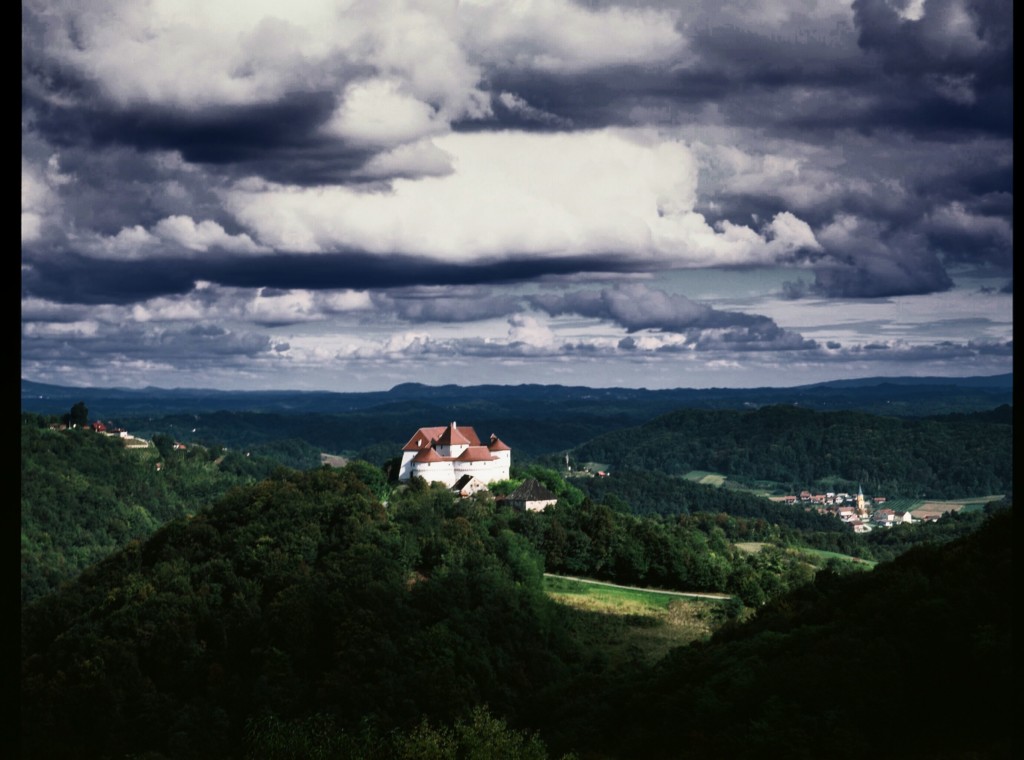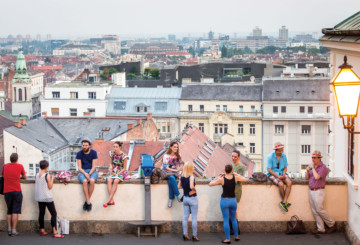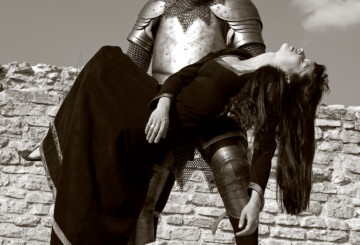If you cross the ridge of Mount Medvednica to the north of Zagreb, the vistas change from the Pannonian plain stretching endlessly eastwards, towaves of green mountain ridges rolling northwards, covered with forests and vineyards, towns and villages nestledhere and there.
Though divided from the capital by a few short kilometres, Zagorje might as well be a different country and in a different era. Both of which make the experience very pleasant. As well as attractive rural landscapes Zagorje has historic buildings and monuments, from rural wooden homes to hilltop castles. There are museums and historic re-enactments, and a very discernible culture, rather gentle, befitting the romance of the landscape. The land beneath your feet bubbles with hot springs, so you’ll come across spas, pleasant places to unwind. And the local cuisine consists of comforting central European classics washed down with local tipple gemišt (white wine spritzer), or some rather good wine from the local vineyards.
It is entirely possible for a native of Zagorje to speak an entire sentence and a speaker of standard Croatian to not have a clue what they are talking about! In Zagorje the Kajkavian dialect is spoken, which is heavily influenced by the language of Slovenia which borders to the east and north.The dialect of one town or village may be significantly different from that a few miles down the road. And in many respects the way of life has changed little for decades. Which, given the pace of life in the modern world, is no bad thing. One happy result is the people are unusually friendly. And wherever you go you will be rewarded by hidden treasures, be they natural or crafted by man.
If you are considering a trip to Zagorje you may well include a visit to a spa. Closest to Zagreb is the Stubica Valley. Stubičke Toplice was once a busy spa resort. The facilities are nowadayssomewhat limited, but there is a tiny spa at the back of the hospital at StubičkeToplice. It’s open from 1pm only and there are rarely many visitors, particularly during the week. Next door Hotel Matija Gubec has indoor and outdoor thermal pools, and has recently added new saunas and massage facilities. Two kilometres down the road in Donja Stubica is Hotel Jezerčica, alarger spa with indoor and outdoor pools and a very pleasant place to spend a few hours or a short break.
Up the road in Gornja Stubica there’s the Museum of the Peasant Uprisings housed in the Oršić Palace. Here you can learn about local culture and history including the story of Matija Gubec and the peasant uprisings.If you make it before 30 April 2018 you can catch an exhibition about Franjo Tahy, the aristocratic tyrant whose cruelty fuelled the uprisings, and which tells you a great deal about the Stubica region as it once was. Gornja Stubica is also home to the Gubec linden tree, massive and very old and set right next to “Pod lipom”, possibly the cutest little pub in the whole world.
Perhaps the best-known spa and pools in Zagorje are at Tuheljske Toplice, which has numerous large indoor and outdoor pools, spa facilities and facilities for children, definitely a fun day out. And at Krapinske Toplice you’ll find Aqua Vivae, the newest spa and the largest indoor pool complex in Croatia, which counts an ice room among its attractions.
Whichever you go for you’ll find excellent food and accommodation onsite or nearby, and rolling green hills and pretty villages to explore. Zagorje’s spas attract visitors from all over Croatia and abroad, and since they are relatively inexpensive too the only surprise is that this is still a well-kept secret.
If it’s historic castles you’re after the classic one to visit is Veliki Tabor, the romantic Gothic tower at its core guarded by stout rounded bastions that give the castle a clover shape. Recently renovated, it houses an excellent museum. You’ll enjoy stories and legends as much as the glorious countryside. Aside from Veliki Tabor, Zagorje is dotted with rural mansions and stately homes, in a better or worse state of repair. Unfortunately there is no single source of information in English that covers all of them – yet. This page in Croatian language however offers comprehensive information: http://www.kulturni-turizam.com/hrv/sadrzaj/dvorcizagorja/1159/opsirnije/.

Zvonimir Čuvalo
And wherever you go, tread lightly and keep an eye out for a wealth plant and animal species. Zagorje is home to no less than 40 species of orchid, some of which are endangered. The best places to spot them are the forests and meadows of Strahinjščica and Ivanščica mountains. In May the roads and streams are lined with the blooms of irises – see in particular the iris garden at Hotel Jezerčica. In the mountains you’ll be astonished by the scent of wild cyclamen and the summertime sweetness of tiny wild raspberries and blackberries. And in the forests in Autumn nature turns the ground into an elfin landscape of fungi of an astonishing number of kinds, while the boughs are heavy with sweet chestnuts. But remember, as many species and landscapes are protected you may not pick the plants and please leave no trace of your stay.
Kumrovec
Hard up against the Croatian-Slovenian border lies the village of Kumrovec, the birthplace of one very famous half-Croat, half Slovene – Marshal Josip Broz Tito, president of Yugoslavia for most of the existence of that erstwhile republic. It’s a picturesque setting for the story of the man who fought the Nazis to free his country and unite the south Slavs. Kumrovec is an excellent example of a skansen – the old core of the village has been preserved in its entirety as a museum. You can wander the streets with their grassy verges and greens, and pop into delightful wooden houses where you can see exhibits such as the old schoolrooms, traditional toys, handcrafts, agriculture, a smithy, collections of Easter eggs and nativity scenes. And all of this is set in glorious countryside. Opening times vary according to the time of year; for information see http://www.mss.mhz.hr/en.
A Springtime treat in Kumrovec
April 21 is St George’s Day, which in Croatia is known as Jurjevo. On this day people have celebrated the coming of Spring with festivities dating back to pagan times to ensure the fertility of the land, the livestock and the household and ward off evil spirits. So for examples horses wore floral decorations and people danced around a bonfire. Drop into Kumrovecon 21 April to see how Jurjevo once looked here, in all its festive glory.
by Nataly Anderson


